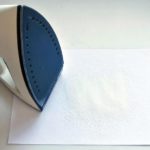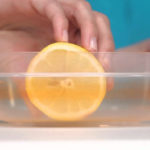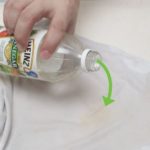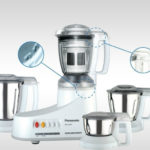– Place the refrigerator at least 10cm away from the wall to ensure air circulation for cooling the condenser.
– Clean the refrigerator regularly, about once every two weeks or at least once a month, to prevent bacteria from thriving and growing. Start by turning the control knob from the (ON) position to the (OFF) position to disconnect power to the refrigerator or unplug it. Remove all food and shelves from the refrigerator. Open the refrigerator door to allow the frost on the freezer compartment to thaw – if any (do not use a knife or a hard object to remove the frost), then use a soft cloth to wipe it dry.

– Do not overcrowd the refrigerator with too many items, as there needs to be enough space for proper air circulation inside the refrigerator.
– Limit opening the refrigerator frequently and keeping it open for excessive periods of time. Doing so will consume a significant amount of electricity. Also, do not cover the shelves to store food in the refrigerator.
– Avoid putting hot food in the refrigerator, as it affects the cooling system and reduces the lifespan of the refrigerator.

– Clean the food and drinks before putting them into the refrigerator. Foods with distinctive odors or salty foods should be placed in sealed bags or containers before putting them into the refrigerator to avoid spreading odors and salt evaporation, which can cause fridge corrosion.
– While opening the refrigerator door, do not let the fan breeze directly into it as it will overload the refrigerator and consume more electricity.
– If the refrigerator is not cold, it may be due to the refrigerator being filled with too many items or the thermostat setting not being appropriate. Remove some food from the refrigerator, turn the thermostat knob to a colder temperature, and check the coldness after the adjustment.
How to Properly Use and Maintain a Blender
In the summer heat, cool smoothies can be quickly prepared with the help of a blender. To ensure it works well and lasts for many years, with good maintenance and regular cleaning, the blender should be well-taken care of.





































